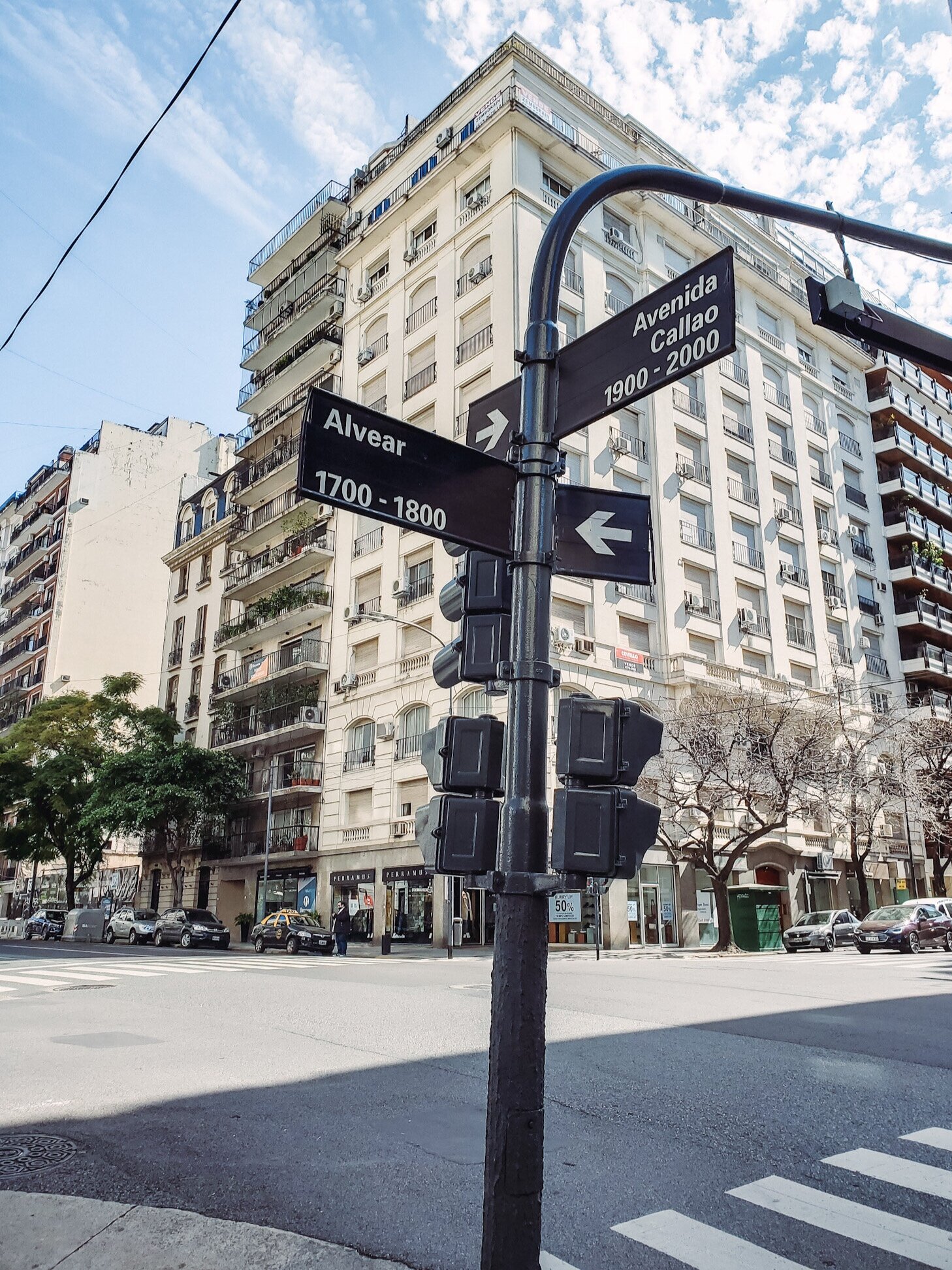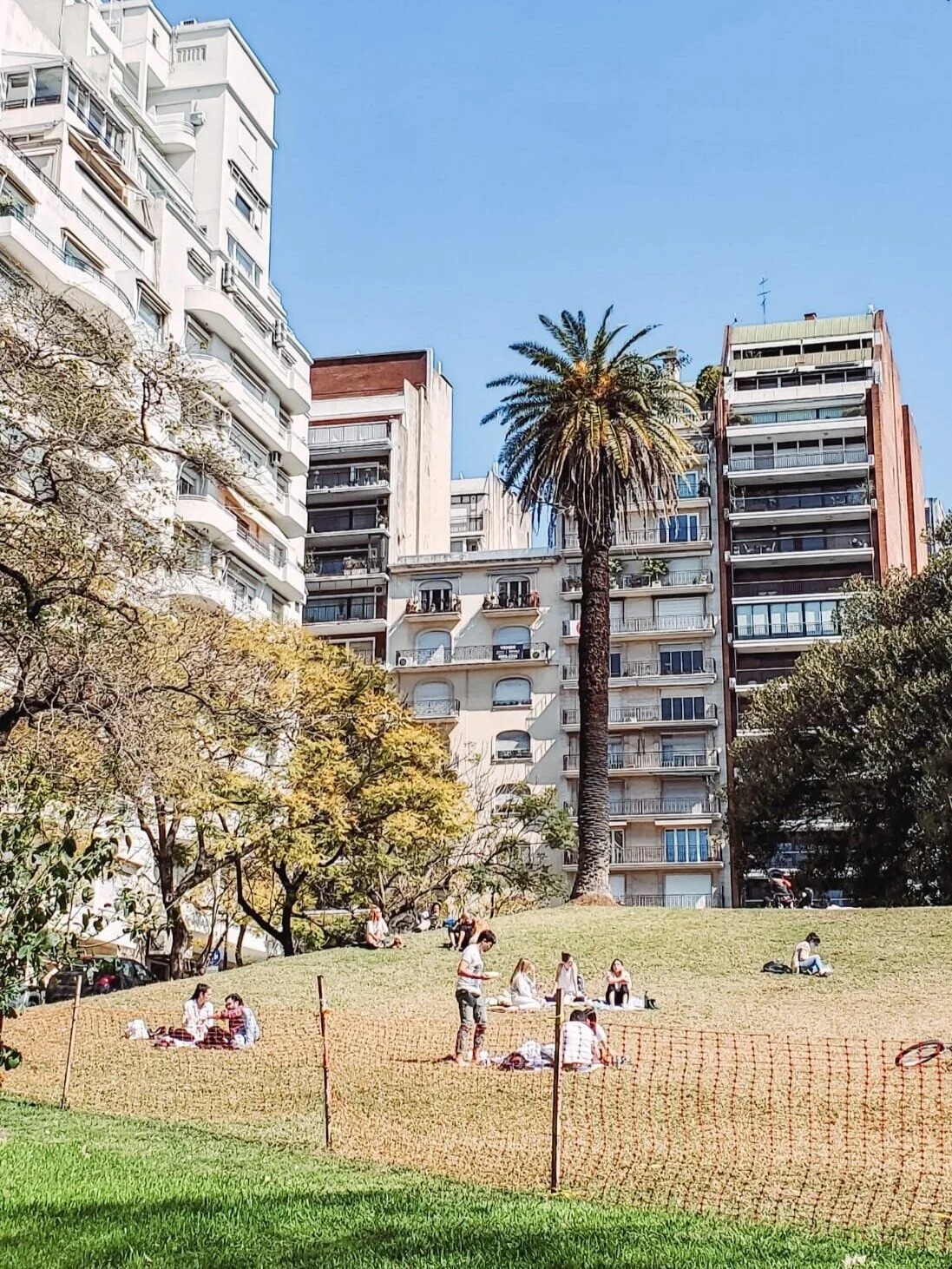Apartment Searching in Buenos Aires
Are you considering moving to Buenos Aires? And you’re wondering what the rental process looks like in Buenos Aires? Or where you should live? I’m going to answer those questions plus give an overview of 5 neighborhoods in Buenos Aires where most expats live.
Checkout our YouTube video where we also show you some apartments listed online that you can rent in each neighborhood. -->
Moving to or visiting Buenos Aires? Be sure to check out this activity list I created with over 50 things you have to do when you’re in Buenos Aires!
We not only lived in Buenos Aires for 3 years, but we’ve lived in 3 different neighborhoods - Microcenter, Recoleta and Puerto Madero. We’ve had a great landlord and an extremely frustrating one. And we got out of a lease early. So trust me, we have been around the block here in Buenos Aires when it comes to renting apartments.
I want to share all that knowledge with you today so your rental process when you move to Buenos Aires will be as smooth as possible. Read to the end of this blog where you’ll find some final tips you’ll want to remember for your Buenos Aires apartment search.
Okay, get your pen and paper ready to take notes. Or you can save this post on your Pinterest board for reference later!
Highlights of the Rental Process
✓ To get your Buenos Aires apartment search started, I recommend the website ZonaProp. It’s very similar to the Zillow website and is super easy to use. It’s a great way to look for rentals in Buenos Aires. We found both our apartments this way.
✓ Prices for apartments will vary greatly. In every neighborhood you’ll find prices ranging from $500USD - $8,000USD/month. Rents will be listed in USD and some in Argentine pesos. It’s up to you and your landlord to decide how you will pay each month (wire transfer, cash, etc.) and in what currency. Note that when USD is listed, they are requiring USD and won’t accept Argentine pesos.
✓ There are 3 costs associated with renting an apartment in Buenos Aires - the rent, expenses and taxes. They are listed as separate line items. The expenses are for building maintenance, heater, security, pool, etc. This is different from the US, where you typically pay one amount to the landlord and they take care of maintenance and taxes. In Buenos Aires, the renter is responsible for all these costs.
✓ Some landlords will offer a “package” option where these 3 costs are lumped together. You pay the landlord a fixed cost each month and they are responsible for paying the taxes and expenses. This is a good option if you don’t want to worry about paying 3 things each month or speak little Spanish.
✓ Leases here are for 2 years! Yes, 2 years!! So make sure you really like the area and apartment before signing a lease!
✓ The deposit is typically 1 months rent in cash. This secures the apartment for you while you negotiate the contract and before you move in (a one-month process).
✓ During the negotiation of your contract you can ask your landlord to change things in the apartment. This is very different from the USA. When we were negotiating our lease for the Recoleta apartment, we asked for chicken wire to be added to the balcony to help protect our dogs.
Now let’s talk about 5 of the major neighborhoods here in Buenos Aires where you’ll find most expats living:
Recoleta
This neighborhood is in the city center and has lots of charm. There are lots of traditional Argentine restaurants mixed in with a few newer ones. Recoleta has many tourist attractions so there’s always a buzz. There are some large parks, a mall and movie theater. It’s definitely family friendly but I would say the general population of the area is older - like retiree age.
If it’s in your budget I would highly recommend Recoleta for everyone. Most apartment buildings will have beautiful architecture to enjoy and the neighborhood as a whole is very european looking. Lots of cute shops and boutiques to shop in. Every morning as you walk around you’ll see cafes with their outdoor tables full of people taking their morning coffee and medialunas.
Puerto Madero
This is going to be the most expensive neighborhood in Buenos Aires. And many of the residents are expats that moved here for work. Puerto Madero has a lot of parks and green space. So if being close to a park for your children or dogs is important then this could be your place. This is also the best place for outdoor activities like jogging or bike riding. Puerto Madero has the least amount of density with more parks and green spaces than buildings. The front of Puerto Madero along the canal has many restaurants to choose from.
A lot of the apartment buildings are high rises (up to 50 stories) and include amenities like pools, tennis courts and meeting rooms. However these amenities make the monthly expenses higher.
Palermo
Known for being the “it” spot. Many people in their 20’s and 30’s live here. Families too, but I would say the neighborhood's vibe is more for singles or couples. There are a lot of bars, clubs and restaurants. The food from this neighborhood is great. Lots of international cuisines. There are also lots of boutique shops and public transportation is widely available.
If this neighborhood interests you - be careful which apartment building you select to live in because I could definitely see the noise level being a problem during the nights. Remember, they get started much later here and clubs/bars are typically open until 7am.
Belgrano
I’m not very familiar with this area but it seems like a lot of expat families choose to live here. It’s still in the city so public transportation is readily available. I personally can’t tell you much for the neighborhood feel because I haven't spent much time in Belgrano.
Martinez / San Isidro -
One of the only places where you will find detached single family homes. If having a yard is important to you, then you should definitely consider Martinez. There are also good international schools located out here. You will need a vehicle to get around since it’s considered the “suburb” of the city. There are lots of restaurants and shops. If you work in the city center, you’re looking at an hour in traffic each way.
Which neighborhood sounds like it would be a fit for you and your family? Let me know in the comments below!
Some Final Tips to Remember:
1) Move to Buenos Aires first and get an AirB&B in the neighborhood you think you want to live in. Then you can explore the area and make sure it’s really where you want to live for 2 years. I don’t recommend renting an apartment on the internet.
2) Be sure to check the neighborhood at night and weekend to see the noise level. Sometimes a place can be quiet during the day and then a bar comes alive after 11pm.
3) Don’t forget you can negotiate things to be changed in your apartment before you sign the lease.
4) USD is important in Buenos Aires so if you can pay your monthly rent in USD, that will likely give you more leverage.
5) Try to find a realtor that speaks English. We’ve had realtors that spoke no English, very little English and one was fluent. Obviously having fluent English made our search and understanding the small details on the contract easier.
I hope this post has addressed some of your doubts on the rental process in Buenos Aires. It’s not an easy process but I’m confident this extra knowledge from an expat that has been through the process twice will be helpful to you.
And don’t forget to download this activity checklist with over 50 things you have to do when in Buenos Aires, Argentina!
I’ve linked some blog posts below you will find helpful in your move to Buenos Aires!






